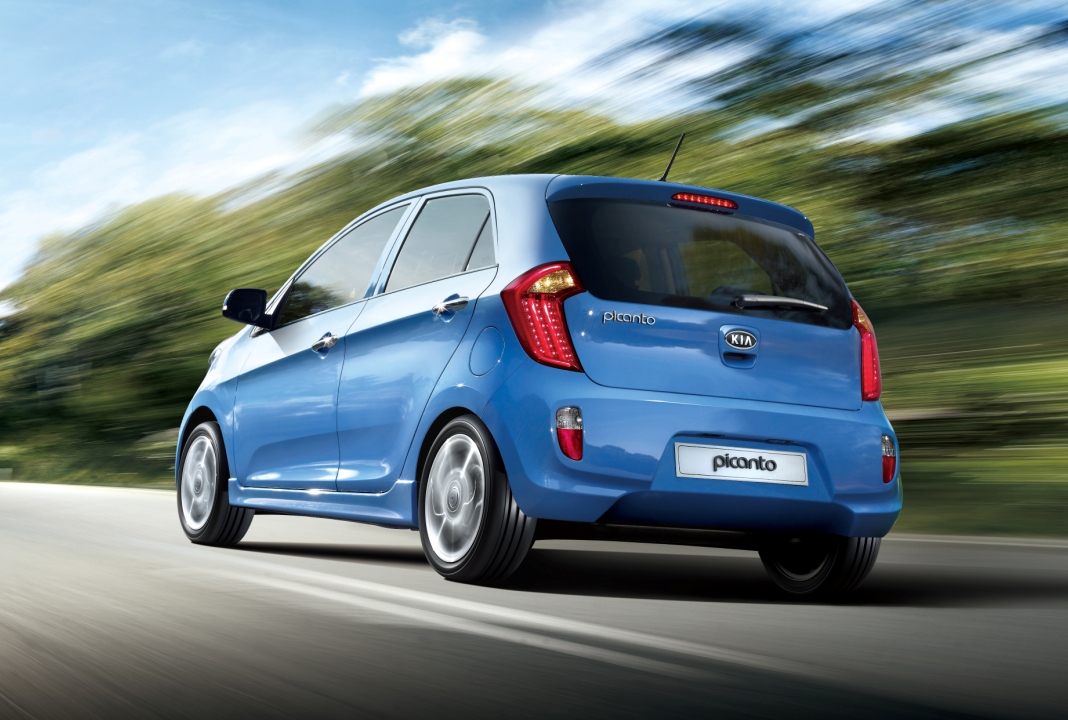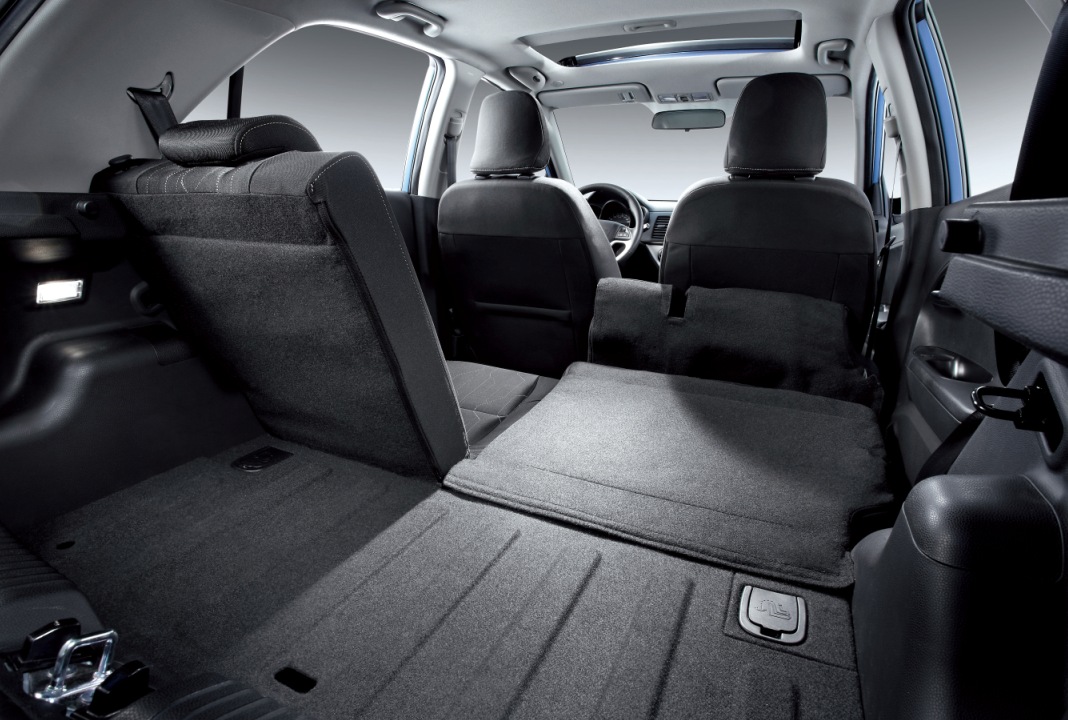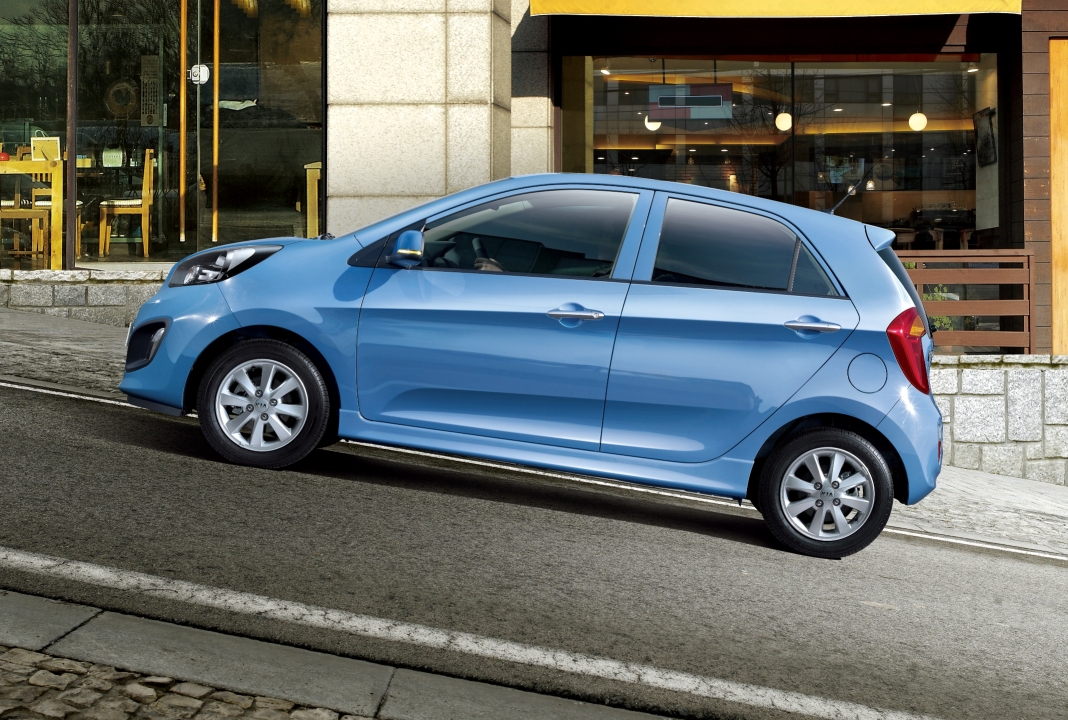A popular fleet and entry-level seller during its outgoing model, the Kia Picanto’s popularity derived from a formidable package of reliability, fuel economy, a youthful and perky persona and utility, all unlined by affordable pricing. Though popular, the Kia Picanto was a value oriented model, which has recently been replaced with a new generation version, which puts a greater emphasis on design, desirability, comfort, amenities and refinement. Slightly bigger than before, the new Picanto isn’t so much being moved up to a different category, but is rather moving up-market as a direct challenge to pricier Japanese and European city cars.
A pepped-up re-design, the new Picanto adopts an adventurous and feisty interpretation of Kia’s contemporary corporate design language and family ‘tiger’ face grille, and while it makes improvements in terms of ride, cabin and stability refinements, it retains a nippy, fresh and involving small car personal and driving dynamic. Along with the more complex and charismatic sheet-metal body panels that replace its previous bug-eyed incarnation, the new Picanto now also offers a more styled and attractive interior design and a host of big car options and amenities, while its city agility is also complemented by more efficient engines comprising 1-liter and 1.2-litre versions.
 With a jutting and prominent bumper assembly, wide air intakes and diamond-style headlamp clusters extending around its flanks, the new Kia Picanto has a muscular and puffed-up appearance, unlike the simple lines of its predecessor. A more up-market Picanto, the new model also features aerodynamic side mirrors, sharp character lines and sills and stylish boomerang rear lights and tailgate spoiler, while its more muscular body looks best with the larger 175/50R15 alloy wheel and tire option. Perhaps its most challenging styling feature is the Picanto’s bonnet tine being set higher than its waistline, but this is however done for pedestrian safety, by increasing space between the sheet metal and the engine.
With a jutting and prominent bumper assembly, wide air intakes and diamond-style headlamp clusters extending around its flanks, the new Kia Picanto has a muscular and puffed-up appearance, unlike the simple lines of its predecessor. A more up-market Picanto, the new model also features aerodynamic side mirrors, sharp character lines and sills and stylish boomerang rear lights and tailgate spoiler, while its more muscular body looks best with the larger 175/50R15 alloy wheel and tire option. Perhaps its most challenging styling feature is the Picanto’s bonnet tine being set higher than its waistline, but this is however done for pedestrian safety, by increasing space between the sheet metal and the engine.
With its stitched leather contoured two-spoke steering wheel’s centre subtly reflecting its corporate ‘tiger’ grille, the new Kia Picanto’s tastefully up-market interior also features aluminum dashboard and console inserts, blue ambient and instrument cluster backlighting lighting. Well laid out buttons and clear three-pod instrumentation, clever storage space including under-seat boxes, under-floor boot organizer and USB and iPod CD stereo connectivity are highly useful, while climate control and optional heated seats are welcome creature comforts. Funkier and more stylized than before, the new Picanto dashboard’s up-market flavor is reflected with improved seat upholstery, bolstering and support, and rear Isofix child seat latches reassuring.
 In terms of space the new Picanto is improved over its predecessor, and accommodates taller front occupants well with seats that can be adjusted very low. Rear legroom is good for its niche and the Picanto’s rear headspace is better than many larger cars, owing to its tall hatchback design, while boot space is decent for its class at 200-litres, which can be greatly increased with folding 60/40 split rear seats. Driving visibility is also a plus point with a big glass area and short and sloped bonnet, while good noise and harshness cabin isolation enhance the Picanto’s refined ambiance, but crucially, do not detract from its direct driving experience.
In terms of space the new Picanto is improved over its predecessor, and accommodates taller front occupants well with seats that can be adjusted very low. Rear legroom is good for its niche and the Picanto’s rear headspace is better than many larger cars, owing to its tall hatchback design, while boot space is decent for its class at 200-litres, which can be greatly increased with folding 60/40 split rear seats. Driving visibility is also a plus point with a big glass area and short and sloped bonnet, while good noise and harshness cabin isolation enhance the Picanto’s refined ambiance, but crucially, do not detract from its direct driving experience.
Offered with either a charismatic 1-litre 3-cylinder entry-level engine or a more refined and altogether better 1.2-litre 4-cylinder engine, the Picanto’s latter power-plant is the one that will feature most prominently in Jordan, where its extra power, torque and greater flexibility better suits Amman’s hilly topography. Though boasting an extra cylinder and 200cc more displacement, the Picanto 1.2 seemed slightly more economical on test drive, as in real world conditions, it requires a lot less hard revving and more modest throttle inputs to achieve the required performance. Smooth and eager to rev, the Picanto’s 1.2-litre engine is a very refined small motor that is comfortable driving the Picanto at high gears on the highway and requires less frequent and less aggressive shift patterns.
 With negligible ‘official’ or ideal fuel consumption and emissions increases over the Picanto 1-litre, the 1.2 manual version tested returns 5-liter per 100km combined fuel consumption and 119g/km CO2 emissions. However, the gains to be had are 18PS and 19lb/ft more than the entry-level engine, for a total 87PS at 6,000rpm and 88lb/ft at 4,000rpm, which combined with a weight increase of just 10kg to 855kg, make the 1.2 manual Picanto quite nippy, flexible and comfortable to drive in traffic, highway or country lane situations. Able to accelerate to 100km/h in 11.6-seconds and a maximum 169km/h, the Picanto 1.2 also remains well responsive at highway cruising speeds of around 130km/h. For in-town driving, a seamless stop-start function cuts consumption by automatically shutting down the engine when the car is stationary.
With negligible ‘official’ or ideal fuel consumption and emissions increases over the Picanto 1-litre, the 1.2 manual version tested returns 5-liter per 100km combined fuel consumption and 119g/km CO2 emissions. However, the gains to be had are 18PS and 19lb/ft more than the entry-level engine, for a total 87PS at 6,000rpm and 88lb/ft at 4,000rpm, which combined with a weight increase of just 10kg to 855kg, make the 1.2 manual Picanto quite nippy, flexible and comfortable to drive in traffic, highway or country lane situations. Able to accelerate to 100km/h in 11.6-seconds and a maximum 169km/h, the Picanto 1.2 also remains well responsive at highway cruising speeds of around 130km/h. For in-town driving, a seamless stop-start function cuts consumption by automatically shutting down the engine when the car is stationary.
With a snappy and accurate 5-speed gearbox with short lever movements and a progressive and light clutch pedal with accurate and intuitive biting point feel, the Picanto 1.2 manual is a joy to drive hard, with each cog change a welcome opportunity. A small light car with a big footprint and little overhangs, the Picanto feels responsive, sharp and agile through corners, while its light steering offering good accuracy and feedback – though the steering is set a little tall for high speed stability, which means one need to work it quickly through tight fast corners. Though refined and sophisticated for such a tiny car, the Picanto can still feel light a brilliantly basic and uncorrupted driving experience, with a direct involvement of driver and car.
 Cornering with electronic stability controls off, the Picanto 1.2 has enough torque to provoke slight understeer that is easily controlled by lifting off, while stoplight starts can be quick if one modulates the right amount of clutch lift-off and throttle for the best combination of traction and wheel-spin. With good safety credentials, the Picanto 1.2 comes with all-round disc brakes, ABS and electronic traction and stability controls, which are particularly reassuring for a small tall car when making quick highway lane changes, where it feels more stable and planted than is expected. Taut and crisp through corners and mature and confident on the highway, the Picanto is however in its element in the city where medium speed corners and maneuvers are executed with panache, precision and nuanced feedback.
Cornering with electronic stability controls off, the Picanto 1.2 has enough torque to provoke slight understeer that is easily controlled by lifting off, while stoplight starts can be quick if one modulates the right amount of clutch lift-off and throttle for the best combination of traction and wheel-spin. With good safety credentials, the Picanto 1.2 comes with all-round disc brakes, ABS and electronic traction and stability controls, which are particularly reassuring for a small tall car when making quick highway lane changes, where it feels more stable and planted than is expected. Taut and crisp through corners and mature and confident on the highway, the Picanto is however in its element in the city where medium speed corners and maneuvers are executed with panache, precision and nuanced feedback.
Kia Picanto 1.2 (manual)
- Engine: 1.2-liter, aluminum block/head, transverse 4-cylinders
- Valve-train: 16-valve, DOHC, dual continuously variable valve timing
- Gearbox: 5-speed manual, front-wheel-drive
- Power, PS (kW): 87 (64) @6,000rpm
- Torque, lb/ft (Nm): 88 (120) @4,000rpm
- 0-100km/h: 11.6-seconds
- Top speed: 169km/h
- Fuel consumption, combined: 5-liters/100km
- CO2 emissions: 119g/km
- Length: 4,595mm
- Width: 1,595mm (excluding door mirrors)
- Height: 1,490mm
- Wheelbase: 2,385mm
- Track, F/R: 1,421/1,424mm
- Overhang, F/R: 700/510mm
- Ground clearance: 152mm
- Headroom, F/R: 1,002/962mm
- Legroom, F/R: 1,070/820mm
- Shoulder-room, F/R: 1,290/1,280mm
- Luggage volume, SAE: 200-liters
- Fuel capacity: 35-liters
- Kerb weight: 855kg
- Steering: Electric assisted rack & pinion
- Lock-to-lock: 3.4-turns
- Turning Circle: 9.8-meters
- Suspension, F: MacPherson struts, coil-springs, gas-charged dampers, anti-roll bar
- Suspension, R: Torsion beam, coil springs, gas-charged dampers
- Brakes, F/R: 241 x 18mm ventilated disc / 234 x 10mm disc
- Tires: 175/50R15





























Recent Comments